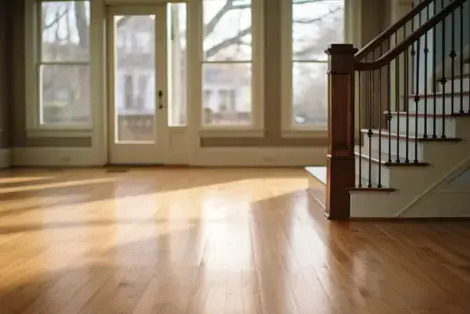
Smog vs. Stone: The Battle for LA's Architectural Beauty
Los Angeles is home to sunshine, palm trees, and stunning stone architecture. But there's a problem—the city's infamous smog is damaging the stone facades of residential and commercial buildings across the city.
In this article, we'll explain what this damage looks like and why it happens. Plus, we'll share how regular cleaning and new methods can help protect these buildings for the future.
How Does LA's Smog Harm Stone?
Cars, factories, and sunlight mix together in LA to form smog. This ground-level ozone is filled with pollutants, and when these pollutants touch stone, they start harmful chemical reactions.
Think of it like this: just as rust can eat away at a car, these pollutants eat away at stone. And over time, this weakens the stone, making it more breakable and less sturdy.
If you walk around LA, you'll see some of the stone buildings getting darker and dirtier. That's the visible damage from pollution, and it causes streaks, dark spots, and even wears the stone down.
But what you don't see is even worse—the weakened stone soaks up more water, which can lead to cracks. Plus, moss and other plants can start growing on it, causing even more damage.
Compare old pictures of famous LA buildings, like the Los Angeles City Hall, with what they look like now. You'll see how much the stone has changed, and not for the better.
Why Clean Stone Regularly?
Regular stone cleaning isn't just a recommendation—it's a necessity.
By maintaining regular cleaning schedules for stone surfaces, we can preserve their beauty and ensure they remain strong and durable for years to come. Whether it's the exterior of a historic LA building or the interior stone flooring of a modern home, care and maintenance are key.
First Impressions Count: Dirty stone can make your property look aged and neglected. Regular cleaning ensures you're always ready to impress.
Brighten It Up: Over time, stone can dull and lose its sparkle. Cleaning brings back its natural brilliance.
Preserve Structural Integrity: Pollutants don't just stain–they erode and weaken stone over time. Regular cleaning and sealing prevents this deterioration.
Stay Strong Against Time: Nature and time can wear down anything, including stone. But with regular cleaning and sealing, you're giving your stone a fighting chance to stand strong for years to come.
Avoid Costly Repairs: Think of cleaning as a preventive measure. Addressing minor issues now can prevent major repairs in the future.
Boost Property Value: A well-maintained stone facade or interior can increase the value of your property. It's an investment in the future.
Economic Efficiency: In the long run, the cost of regular maintenance is far less than the price tag of extensive restoration or replacements. Regular cleaning and sealing is a financially savvy move.
How Do We Clean Stone Today?
Cleaning stone has come a long way from the rudimentary methods of the past.
With the advancement of technology and a deeper understanding of stone preservation, we now have various techniques to maintain the beauty and integrity of stone surfaces. Here's what's currently in use:
Water Cleaning
High pressure water can be sprayed using state of the art equipment to wash away dirt from stone surfaces. This method is effective for light cleaning tasks, but it might not address heavy grime.
Being eco-friendly, it avoids the introduction of any harmful chemicals, but can be less potent against stubborn stains or biological growths.
Chemical Cleaning
Specialized cleaning productss can be used to eliminate pollutants from stone, but it's important that the correct products are chosen to prevent any potential harm to the stone. Before a full application, a small inconspicuous area is typically tested to ensure no discoloration or damage will occur. The stone is then rinsed thoroughly to avoid any product residue.
Physical Cleaning
Professionals use techniques like diamond pads or high pressure cleaning to directly remove dirt from stone surfaces.
These methods are particularly effective, and are great for improving the look and shine. It’s great for cleaning concrete floors and other outdoor surfaces.
Final thoughts
Los Angeles is known for its remarkable stone architecture. But beneath the city's beauty lies a pressing concern: smog is silently eroding and staining these stone landmarks.
As vehicles and factories release pollutants that mix with sunlight, the resulting smog doesn't just cloud the air—it harms our stone buildings, leaving them weakened, dirty, and at risk.
Regular and proper cleaning is a vital step in preserving LA's rich architectural legacy. By understanding and addressing the damage caused by smog, we can ensure that these buildings stand strong and proud for many more generations to come.



